|
Author Stuart Brown, in, Play: How It Shapes the Brain, Opens the Imagination, and Invigorates the Soul, noticed a striking theme in obituaries. What people remembered most about those who died were play moments. Head lines such as, "A Spitball-Shooting Executive," "A Frank Zappa Fan," and "The Lawn King: A practical Joker with a Heart," were littered over the paper. In each obituary descriptions were remembrances of play states which were like, "joyful threads running through their lives, weaving memories and binding them together emotionally."
Ironically, the very element of life celebrated and found most important in retrospect, is often believed to be frivolous. At some point in our journey to adulthood, we are made to feel guilty for playing. It's called unproductive, a waste of time, even selfish. Unless the play is teaching us a skill, making money, or a strategy to get close with someone who can advanced our position in life, play is considered irresponsible. What remains of acceptable play is often a very organized, competitive sport which lacks the spontaneity and joy that childhood play once brought. Skeptics may say, "Well, duh. Of course you will be happy if you play all the time. But for those of us who aren't rich or retired or both, there simply is no time for play." We fear play like a slippery slope that will lead us to out of control irresponsible behavior. The truth is, "the beneficial effects of getting just a little true play can spread through our life, actually making us more productive and happier in everything we do," says Brown. Work is not the opposite of play, it is rather a companion. When we are playful, we work harder, we play at our work, we are energized, more efficient, and get lost in our work. The opposite of play is boredom and depression. Play is essential throughout our lives, but especially in childhood. In his research, Brown discovered a missing element in the history of mass murderers in Texas. They were not allowed to play as children. Instead they were expected to do useful things like stay inside and practice the piano. When visitors came to the house, the children were put on display to show off whatever new trick he was taught by a parent. These murderers grew up in homes that were overly structured, rigid, and cold. Play was gone. Play and daydreaming are important in teaching boundaries, empathy, understanding, trust of others, and coping skills. They are even associated with higher academic performance and retention of knowledge. The social skills developed in play are so strong that play even diminishes the predilection of violence in children who have been abused. Play also helps society produce innovative ideas. "The toys of today are tomorrow's inventions." Play with numbers leads to mathematical reasoning; wind-up toys led to the first clock; even the first steam engine and plane were toys. A generation ago kids played around building their own computers. Today's kids are tinkering with robotics. So why do we over-schedule our children with classes, school, sports, and other extra-curricular activities? It turns out the road to a successful future is paved with hours and hours of unstructured play. And what about us adults? If we go without play for too long we eventually hit a wall and ask ourselves, "Is this all there is? Is this what the rest of my life is going to be like?" A sense of ennui takes over and a crisis hits. Brown says, "When we stop playing, we stop developing, and when that happens, the laws of entropy take over- things fall apart... When we stop playing, we start dying." For some this experience happens in adolescence, for others not until their sixties. However, for those who know how to bring play to their life's work, it never happens. If you are in need of a play boost, start with reflecting on your childhood play. What were your best play moments? What are the themes that run throughout your childhood as enjoyable, magical, experiences? We all have different play interests and personalities. Rather than start over with a search of new hobbies, start by getting back in touch with your childhood interests. When I took time to reflect, I was surprised to discover a theme of building and architecture design in my play history. I never thought of building as play. Although- not so surprising- as an adult, I spend quite a bit of my time planning possible home remodels, working on home improvement projects, and landscaping. My pinterest account is full of tiny-houses. I love going into my friend's homes and imagining new floor plans. I never noticed I did these things out of play and somewhere along the way these tasks lost some of their joy. By getting back in touch with my original intrigue with architecture, I've starting playing again at it. While my responsible-gotta-make-progress on home improvement mindset has slowed, my joy in it has come back. The tasks I do I enjoy and I'm finding more time for play with my kids. It is funny how when we revive play in our lives everything seems more balanced and easier. Take time this summer to revive play. It brings a sense of satisfaction and energy towards work that cannot be sustained without some fun. It also is what keeps relationships alive and enjoyable. It's what a good life is all about. So go out there and play! Catch you later, Stephanie Patterson, M.S., LMFT Downtown San Luis Obispo and downtown Atascadero, California www.SLOfamilyCounseling.com Dr. Lynne Kenney and social worker Wendy Young created a simple parenting book with sound advice entitled, Bloom. 50 Things to Say, Think, and Do with Anxious, Angry and Over-the-Top Kids. It's easy to read and not watered down with a lot of anecdotal fluff. Although there are no original ideas, it provides a nice overview of what most therapists are recommending to address behavioral problems. If you want quick parenting advice that is easy to understand, look no further.
Messy room? Try helping your child visualize what a clean room will look like. Then break the task down into chunks. Have your child imagine what it will look like clean and how he or she will feel when the task is accomplished. Pictures can be helpful. Sassy attitude? Non-verbal communication is more powerful than words, so pay close attention to your own non-verbal communication. Many parents are unaware of their own eye-rolling or frustrated faces. We cannot expect our children to choose behaviors we do not model ourselves. Kids may also imitate the behavior of other family members.The first step in softening sassy behavior is to create a family culture of kindness. Although it takes time to change the tone in the home, it is well worth it. Next, think about what your child is trying to say. Is he sad, feeling powerless, lonely, misunderstood, or angry? Encourage your child to articulate her emotion in appropriate ways and help her get her needs met. Busy Body? Do you have a child who always seems to be on the move or squirming around? Kids are wiggly for a variety of reasons, including sensory overstimulation, hearing issues, vision problems, or Attention Deficit Disorder. Finding out why your child is fidgety requires some detective work. Notice your child. Ask him questions about why he moves. Seek out a professional assessment by a psychologist, occupational therapist, or pediatrician, if needed. Often children's nervous systems are just catching up on development and some people just think better when they move. Rather than asking your child to stop, help him find appropriate ways to work out his busy body. After reading Bloom, I feel reminded of how to be a calm, logical parent. It was a good check-in for me, because parenting is a never ending task of self-discovery and self-mastery. Do you need a parenting refresher or reminder? Go to your source of parenting advice for an update. It may surprise you how much more efficient or peaceful your parenting can be. Cheers, Stephanie Patterson, M.S., LMFT (805) 284-0724 Downtown SLO and Atascadero StephaniePattersonMFT@gmail.com
It takes time and training for us to become good mentors who can assist our youth as they grow into something new.
I have a book that can help: The 7 Habits of Highly Effective Teens, by Sean Covey, is chock-full of good advice for teens or for anyone. The teen version of the 7 habits is simple and entertaining. It is full of practical advice, relevant stories and funny cartoons.The principles in this book are classic and stand the test of time. Here is the "cliff-note" version for you, but it might be worth it to you to study the real deal. Habit 1: Be Proactive Take responsibility for your life. Don’t blame your problems on others. Refuse to be a victim. If you want something, go get it. Use language such as, “I’ll do it,” “I can do better than that,” “Let’s look at all our options,” “I choose to,” or “There’s gotta be a way.” As you do this, you will find the realm of things you have control over grows. You will become able to make meaningful changes in your life that previously you thought were out of your control.
Habit 2: Begin with the End in Mind Define your mission and goals in life. Know where you want to be in 5 years. Visualize your best possible self. It’s important to know your destination before you set out. At your last breath of life, what pique experiences or accomplishments would you like to remember? Most of us don’t know where we are going. We don’t take time to visualize the details and commit to that vision. If you clarify your goals and your end destination, you may be surprised how having a clear direction changes your daily choices and helps you stay on course. Write it down in your journal or planner.
Habit 3: Put First Things First Prioritize and do the most important things first. Prioritize. Get your most important tasks done first. “You can do anything you want, but you can’t do everything you want.” When you plan, make goals, and keep schedules, you are able to fit in more. When you plan, carve out time for important relationships, exercise, and relaxation. If you don’t, the most pressing things will take over and squeeze out what’s most important to you. Avoid procrastinating, attending to unimportant tasks, other people’s small problems, or interruptions, or slacking.
Habit 4: Think Win-Win Have an everyone-can-win attitude. Think Win-Win. Successful, cheerful people can find a win-win in any situation. There are 4 ways to think of a situation: win-lose, lose-win, lose-lose, or win-win.
Habit 5: Seek First to Understand, Then to Be Understood Listen to people sincerely. The deepest need of the human heart is to be understood. If you learn to be a good listener you will have better relationships, get quite smart, and be more efficient with your problem solving. Avoid spacing out, pretend listening, selective listening, focusing solely on the words being spoken, or having a self-centered perspective when listening. Instead, listen to the body language, imagine what it is like to be in the other person’s shoes, and make mirroring/empathic statements such as “I can see you are feeling…” or “So, what you’re saying is…” Get better at listening by trying this:
Habit 6: Synergize Work together to achieve more. To synergize is to celebrate differences, teamwork, open-mindedness, and finding new and better ways to work together. Avoid ignorance, cliques, and prejudice. When faced with a problem of my way vs. your way, try this:
Habit 7: Sharpen the Saw Renew yourself regularly. Sharpen the saw. We all need a little me-time to unwind and rejuvenate. Check your balance on taking care of your body, brain, heart, and soul. Sometimes the most effective approach is to take a break. It can bring you back to your task with revived spirits and energy.
And finally, keep hope alive. As Covey puts it, “If you ever find yourself falling short, don’t get discouraged. Remember the flight of an airplane. When an airplane takes off it has a flight plan. However, during the course of the flight, wind, rain, turbulence, air traffic, human error, and other factors keep knocking the plan off course. In fact, a plane is off course about 90 percent of the time. The key is that the pilots keep making small course corrections by reading their instruments and talking to the control tower. As a result, a plane reaches its destination… keep hope alive, you’ll eventually reach your destination." Sincerely, Stephanie Patterson, M.S., LMFT Downtown Atascadero & San Luis Obispo The secret to happiness is being able to enjoy the moment.
Elisha Goldstein systematically teaches how to find clarity in his book, The NOW Effect: How this Moment Can Change the Rest of Your Life. Using these same techniques described in his book, Goldstein was able to escape a life of addictions. He gained peace and a sense of control in his life. We have thoughts, but we are not our thoughts. We have feelings, but we are not our feelings. We have bodily sensation, but we are not our bodies. Viktor Frankl noticed, "In-between stimulus and response there is a space." Whether you call it a "space", a self, or the soul, one thing is certain: There is a being collaborating with these systems. When you believe your thoughts as facts, you are letting your thoughts control you. When you fear your feelings or bodily pain will over take you so you try to numb or hide from them, you are letting your feelings and body control you. You are then on autopilot. In moments of clarity, you are able to separate yourself from your feelings, thoughts, and sensations. You are able to be aware of them, notice them, and accept them. Then something magical happens-- you are able to choose what to do next. Goldstein calls this a "choice point." Did you know imagining doing something changes your brain as if you actually did it? Creepy and cool... Through meditation and mindfulness practice you can grow the parts of your brain that can soothe the body, quiet the mind, and roll with the feelings. Research shows meditation increases good feelings and anti-bodies, which means you get sick less frequently. Life was a little sweeter for me this week. I was kinder and more playful after trying out the mindfulness techniques. I plan to keep this a regular practice. So, what's to lose? Get mindful and find the freedom of choosing your reactions to life. Check out "The Now Effect" on YouTube for some free guided meditations. Namaste, Stephanie Patterson, M.S., LMFT (805) 284-0724 Located downtown San Luis Obispo and downtown Atacadero, CA www.SLOfamilyCounseling.com I took some extra breaks between reading sessions this week. I needed time to let what I read settle in. I had to digest it slowly before diving back into evaluating the shocking and horrendous material of, The Harmful Effects of Pornography, by Fight The New Drug. What I read was a compilation of results from research on pornography. The results are in. They are consistent, loud, and clear. Pornography is a drug. It destroys relationships and it makes you a lousy lover. Despite its negative impact, use of pornography is rampant, mainstream, and a cultural norm. Over 40% of men have viewed pornography in the last week and 9% of women. For twenty-something year olds, the numbers go over 50% for men and 20% for women. Pornography sites are also popular for children and teenagers. It's everywhere. So what does this mean? Pornography is a drug Viewing pornography has the same effect on the brain as any other dopamine stimulating drug, like heroin or cocaine. However, pornography has an edge that other drugs don't. It activates our natural reward system. Sex is a natural drive that our bodies are primed to respond to. Thank goodness for this, otherwise our species would begin to fail. However, when our sex drives are high-jacked by novelty, surprise, and the anxiety-producing experiences that pornography lures us into, our brains begin to suffer. Imaging shows that brains that view moderate amounts of pornography have less grey matter, the cells needed for planning, thinking, and organizing. These pornography viewing brains are under-active in the areas that make us more human, the areas where we have the power to choose. The same brains are over-active in the reward system areas, those primal, selfish areas that are always seeking for the next high, just like the brains of substance addicts. Sadly, it doesn't take long for the brain to get hooked on pornography and to start changing. The good news is the brain damage caused by pornography or heavy internet use, can slowly reverse itself by simply refraining. However, for many addicts, ceasing pornography can be extremely challenging. Support groups, accountability systems, and counseling may be needed. Seek help if needed. There is hope for recovery. Effects on Teen Brains Teenagers are especially vulnerable to the effects of pornography. Their developing brains respond much more quickly to addictions than mature brains do. Addictions developed in adolescence can be harder to end. It is also the time when sexual preferences are formed. Themes in pornography are aggressive, male-entitled, and exaggerated. When one is aroused while viewing these images, the brain learns to pair pleasure with the images, leading to lifelong sexual fetishes. Males often try to convince their partners to re-enact aggressive, humiliating, or distasteful sexual acts because that is the only way they know how to get satisfaction. Today, more girls are offering anal sex and emotionally detached sex to boys than ever before. This is an effort to win attention or to live up to standards set by pornography. Girls feel in competition with pornography for the affection of their boyfriends, and they are woefully disappointed in their non-porn star bodies. Overall, online porn lowers academic performance and increases impulsiveness, restlessness, and sexually aggressive behaviors. Effects on Relationships Pornography makes violence appear sexy. Even soft-core porn is correlated with using verbal coercion or drugs and alcohol to sexually coerce women. All types of pornography are correlated with a future likelihood of raping a woman. Group sex and date rape is normalized and supported by pornography users. From my point of view as a trauma therapist, this is a terrible cultural shift for both women and men in the next generation. Porn users also become lousy lovers. Normal life is just not simulating enough. Multiple studies have found a sharp increase (from 5% to 30%) in erectile dysfunction for 18-25 year olds since the widespread use of pornography began. That means 1/3 of hormonally-robust young men cannot keep an erection! Another study in 2010 showed 36% of teen boys had no interest in sex, nearly a 19% jump from 3 years earlier. Men are losing interest in romantic relationships and finding less value in pursuing monogamous relationships. Nearly two-thirds of attorneys have seen a sudden rise in divorces related to the internet. Approximately 62% of divorces are blamed on internet use. Men are using pornography and their women are angry. Thirty-four percent of women say any involvement in pornography is infidelity. Women blame their men's porn use for causing mistrust, lack of intimacy, anxiety, and sometimes trauma. Men complain that their real sex lives do not measure up to their imaginary online sex, leading to a decrease in monogamous behaviors. With lack of sexual interest with partners, an increase in erectile dysfunction, and increased desire for variety, marriage is falling apart. Viewing pornography also increases sexual aggression in marriage. Typical progression goes as follows: 1) The consumer gets hooked. He goes back for more, more, more in search of that first high. 2) Next, there is an escalation effect. The user requires rougher, more explicit, or more deviant material to get his or her high. 3) Desensitization occurs so that originally shocking or repulsive material comes to be seen as acceptable and commonplace. 4) There is an increased tendency to act out sexual behaviors viewed in pornography, including frequenting massage parlors. Effects on Families If someone in your family struggles with a pornography addiction, you are probably highly aware of all the subtle and insidious ways it affects your family. Men who use porn are disconnected emotionally and physically from their family. They ignore their children to provide more online time. Men who view porn are less child-centered and are particularly disinterested in having female children. Pamela Paul wrote, "Countless men have described to me how, while using pornography, they have lost the ability to relate to or be close to women... They found the way they looked at women in real life was warping to fit the pornography fantasies they consumed onscreen. Their daily interactions with women became pornified, Their relationships soured. They had trouble relating to women as individual human beings. They worried about the way they saw their daughters and girls their daughters' age." There is little support for porn addicts and their partners. Most try to deal with it on their own, avoiding talking about it even with their closest friends. There is so much shame surrounding sexual addictions that many suffer in silence. Fight the New Drug is a great online resource for information and help. There are also counselors who specialize in this sexual addictions who can help. This post is just a sample of the research that speaks out to the horrors of pornography. The amount of data I discovered displaying the disintegration of love and families was heartbreaking. Wise up, check out the facts, commit to love not porn, and speak out. The health of our humanity is at stake. To love, Stephanie Patterson, M.S., LMFT San Luis Obispo, CA
Typically the client is not mentally ill but is rather a functioning adult who'd like help solving a problem in life such as finding a soul mate, improving performance at work, or making more friends. Therapists, on the other hand, can treat mental illness such as depression, anxiety, trauma, or personality disorder.
2) Coaches are not licensed. Since coaching is so new, there is no licensing board yet. There are some accreditation bodies that are trying to instill standards into life-coach training, but not all coaches choose to get the approved training. Truly, anyone can choose to be called a coach. Alternatively, therapists must obtain a Master's Degree in Psychology, follow rigorous work experience standards under supervision, and must pass a comprehension exam. The process is very organized and the requirements are extensive and stringently supervised. 3) Coaches work together toward the client's self-chosen goals. Their job is to encourage, motivate, and hold the client accountable. Coaches view the client as a whole person with many strengths and they encourage the client to use those strengths to develop improvement. In this manner, I consider my views to be very similar to coaches' views. However, some therapists view their clients as "mentally ill" or "dysfunctional." With this mind frame, which is designed by insurance companies, some therapists see their role as helping to "heal" the other person. This is a broken-person model, and it puts the therapist in a superior role to the client. Many clients enjoy that type of transference-relationship, but it is not healthy in my opinion. 4) Coaches can serve people online, on the phone, in person, or via email. They utilize multiple modalities, making their services accessible to almost anyone with any type of schedule. While therapists can do tele-therapy or web-therapy, they can only serve people residing in the state in which the therapist is licensed. Therapists work in 30, 50, or 90 minute sessions. 5) Coaches cannot bill insurance. Therapists and counselors can bill insurance if you have a approved diagnosis, but coaches are cash pay only. So should you use a coach or a therapist? Well, that depends on the type of problem you have; the way in which you like to work; and whether you are able to find a qualified, experienced professional. The coaching profession is a true grass-roots mental health movement. It fills a hugely neglected need. It gives a response to the needs of a "normal-healthy" group of people who want help improving themselves. Coaching seems to be a better fit for some men, whereas some women gravitate more toward counseling with a therapist. So, which is better? It's up to you. Looking into a coach? Make sure the coach is well-qualified and has good references. Having ICF (International Coaching Federation) accreditation will ensure you that the coach has had some basic training. Otherwise, just find someone whom you like and who you think could help launch you forward into your desired future. Good luck, Stephanie Patterson, M.S., LMFT (805) 284-0724 1190 Marsh Street, San Luis Obispo, CA www.SLOfamilyCounseling.com After finishing the last page of Brene Brown's book, The Gifts of Imperfection, I felt something I don't normally feel. Most books give me a sense of familiarity, the way I feel after a long pleasant conversation with someone I respect. But with Brene, it is a little different. I feel that I know her and can sense her; not in a new age-y sort of way, but in an, "I get you because you dare to call it like it is. I get you because you speak your heart." She draws conclusions from her decades of research and thousands of interviews and shares them with us, while generously exposing her own personal journey. She does a brilliant job. Brene Brown noticed a marked distinction between those who were happy and those who were not. The pattern was clear. Those who were happy seemed to embrace life wholeheartedly. They didn't hold back; they were authentic and joyful. Here is a summary of her ideas that can help you to begin your own personal journey to embrace life wholeheartedly. 1. Cultivate Authenticity: Let go of what people think. Being authentic is a daily practice of letting go of who we think we are supposed to be and embracing who we are. This means being imperfect, setting boundaries, being compassionate, and believing we are enough. e.e. Cummings wrote, "To be nobody-but-yourself in a world which is doing its best, night and day, to make you everybody but yourself- means to fight the hardest battle which any human being can fight- and never stop fighting." We are inherently bad at being what we are 'supposed to be,' and prodigies at being ourselves. Brown states, "'Staying real' is one of the most courageous battles that we'll never stop fighting." Go ahead, be you. 2. Cultivate Self-Compassion: Let go of perfectionism. "Perfectionism is not the same thing as striving to be your best. Perfectionism is the belief that if we live perfect, look perfect, and act perfect, we can minimize or avoid the pain of blame, judgment, and shame. It's a shield. Perfectionism is a twenty-ton shield that we lug around thinking it will protect us when, in fact, it's the thing that's really preventing us from taking flight." Trying to measure up, be who every one wants you to be, is not self-improvement. It's about earning approval and acceptance, pleasing, performing, perfectly. Healthy self-improvement is motivated by what you think you need to improve. Perfectionism is motivated by worrying what others will think. Curious about how self-compassionate you are? Take this quiz to find out. 3. Cultivate a Resilient Spirit: Let go of numbing and powerlessness. Resilience is created by developing good problem-solving skills, seeking help, knowing how to cope with feelings, having social support available, and being connected to friends and family. And yet, above all else, the most important factor in being resilient is... drum roll please... spirituality. A connection to a power greater than oneself super-proofs you from the blows of life. It is also helpful to educate yourself on the effects of media. Remind yourself that trying to be like celebrities is a ridiculous waste of time. Numbing yourself and 'taking the edge off' of pain gets in the way of becoming strong. Try to feel your feelings and understand that they will pass. You cannot selectively numb emotions. When you do things to avoid emotional pain, you remove the sweet, joyful emotions as well. "When we lose our tolerance for discomfort, we lose joy." 4. Cultivate Gratitude and Joy Without exception, every person Brown interviewed who described living a joyful life practiced gratitude. Make a habit of being grateful. Often we hold back from intense joyful experiences. Why? Because they can bring vulnerability and intensity. We fear it won't last and we'll be knocked off our feet by an impending disaster. Brown points out, "Until we can tolerate vulnerability and transform it into gratitude, intense feelings of love will often bring up the fear of loss." Practice feeling gratitude and tolerate the anxiety that sometimes accompanies gratitude; that is the path to joy. 5. Cultivate Intuition and Trusting Faith Intuition is not about rejecting reasoning. It's more like a rapid-fire mental puzzle. The brain makes an observation and then scans its memories for a series of matches to get a "gut" feeling. Sometimes our rapid-fire thinking gives us an answer to follow our "gut." Yet, other times, it encourages us to go further, to seek out more facts. When we are able to trust our gut and go with the ambiguity that arises, we build our faith. Anne Lamott says, "The opposite of faith is not doubt, but certainty." Get comfortable with your gut; converse with it often; and trust its wisdom. 6. Cultivate Creativity Make time to be creative. When we create, we make unique contributions to this world and create meaning. Take a class; find a community of like-minded creative people. It will enrich your life. It is not a waste of time. It is life original. 7. Cultivate Play and Rest Folks who live wholeheartedly do a lot of fooling around, have fun, and hanging out. No matter your age, be playful. Create time to joke, socialize, and simply be spontaneous. After all that playing, you'll be tired. Sleep well. Cross off something from your schedule and replace it with, "Nap." We do ourselves no service by burning the candle at both ends and living life while dangerously sleepy. Rest and sleep. You are human. 8. Cultivate Calm and Stillness Experiencing quiet and still moments is when we open a space for feeling our gut, practicing gratitude, and sensing a connection with a higher power. Brown defines stillness this way. "[It's] not about focusing on nothingness; it's about creating a clearing. It's opening up an emotionally clutter-free space and allowing ourselves to feel and think and dream and question." So, turn off your devices and stop the rush of to-do lists to take a moment to be still. Practicing calmness is one of the most valuable tools I teach my clients. Harriet Lerner says, "Anxiety is extremely contagious, but so is calm." So, do you want to infect people with more anxiety or spread a calmness within yourself and to others surrounding you? 9. Cultivate Meaningful Work We all have gifts and talents. When we squander our gifts we cause distress in our lives. You decide what is meaningful for you. It may translate into a job or it may not. Either way, it is important to cultivate and share what is meaningful to you. Additionally, sharing your talents with the world is one of the most powerful avenues of connection with a higher power. 10. Cultivate Laughter, Song, and Dance Mark Twain said it all when he remarked, "Dance like no one is watching. Sing like no one is listening. Love like you've never been hurt and live like it's heaven on Earth." Make jokes, dance in your kitchen, sing off-pitch. Go ahead, embarrass yourself or your kid. It's liberating to forget the judgments of others and do what your DNA calls you to. As you embark on your journey to live life more wholeheartedly authnentically, you will begin to feel joy and a deep satisfaction through good times and bad. You will be living among the brave, something the majority of folks know little about. You will be different. Brown warns, "Choosing to live and love with our whole hearts is an act of defiance. You're going to confuse, piss off, and terrify lots of people-- including yourself. One minute you'll pray that the transformation stops, and the next minute you'll pray that it never ends. You'll also wonder how you can feel so brave and so afraid at the same time. At least that's how I feel most of the time... brave, afraid, and very, very alive." To feeling alive,
Talking about sex with teens can be a downright risky endeavor. We try to act cool on the outside while our insides are screaming, "Am I doing this right? I hope he doesn't ask any questions! Oh I can't wait for this to be over." We radiate insecurity in a way that shuts down communication and often adds confusion to teen sexual development.
For Goodness Sex, by Al Vernacchio, is a wonderful book on sexuality, especially when dealing with teens. If you feel insecure about talking with your teen about sex, read it. If you feel pretty good about your conversations with your teen about sex, read it. If you want to improve your own relationship to sex, read it. Bottom line: we all need a little more education and depth in our understanding of sexuality. Vernacchio says, "I decided a long time ago that my role as a sexuality educator isn't to get teenagers to have or not have sex-- that's something they'll decide as they grow to know themselves and their values more clearly. But I do see it as my job to get kids to think more thoughtfully about sexuality, to learn what it means to respect their bodies, and to offer them a positive and realistic framework for which to make sexual decisions." Research consistently supports the idea that parents must be the primary sexuality educators of their children. Studies show that even teens want their parents to talk to them about sex, even though they will act disgusted. Making family values explicit is the best way to create ongoing dialogue and clear expectations for children and teens. "In moralizing, the goal is to instill the parents' values in their children. Value clarification, though, seeks to have a person develop a set of values that are uniquely their own and defendable." It is important that children and teens know both the family's morals and that they be given space to question those morals and define their own values. Vernacchio gives a great, positive analogy for sex: pizza. He compares it to the traditional analogy of baseball and points out how destructive this model is. Check out his analogy via his Ted Talk. In my experience, teens are often eager to heed advice that directs them to what they want. Vernacchio uses this skill to his advantage when talking about sex. Here is an excerpt of a class discussion about setting goals: "'When you think about your future, you know, when you're (God forbid) as old as me,' I'll ask my students, "how many of you picture yourself working on your third divorce?' Nobody raises a hand. 'How many of you want to live alone with a lot of cats?' One or two wise guys raise their hands. 'So what do you want for your future?' I'll ask. They'll blurt a few variations on the same answer: They want a relationship thats fun and sexy, full of support and pleasure, one that's stable and loving and that they can depend on. 'Keeping that long-term goal in mind, I want you to think about the path from here to where you want to end up. If you've mastered the hookup, that brings a certain set of skills, but does it bring you the skills to get to your relationship goal?' 'Part of the way there,' a boy with a goatee says. 'Sure,' I say, 'But if you want to be a good basketball player, why are you practicing on your skateboard all the time? At the end of the day, you'll simply be a good skateboarder who wishes he could play basketball.' I let that sink in. Then continue: 'All of the relationships we have in life offer us opportunities to practice, to learn from our mistakes, and to grow. Relationships, whether friendships or sweethearts, don't just happen; they require work. The only way we can become more knowledgable about relationships- and thereby our role in them- is by being in relationships, and by being our authentic selves in those relationships." Not sure how to start those awkward conversations? When in doubt, ask thought provoking questions such as, "What is a deal breaker for you in a relationship?", "What do you consider a virgin to be?" "What parts of your body do you like or dislike?" "Ever notice the gender role differences in toys?" or "That sex scene did not seem very realistic to me, what do you think?" When you ask questions, you are giving space for your teen to clarify his or her values, be comfortable with sexuality, and make more informed, intentional decisions. Sexuality is, after all, a very tender, but very good part of our selves. With the world bombarding us with negative, competitive, and false information about sexuality, we need to shore up the truth about its pro-social, healthy and kind aspects. Our youth need it more than ever. This book could be a good start. Good luck! Stephanie Patterson, M.S., LMFT For many of you, this week's book will not interest or help you. You are among the crowd that does not suffer from intrusive thoughts. You are not convinced by your own brain to do ridiculous things. When you worry, your fears are rational and short-lived. You are essentially... free. But some of you are familiar with Obsessive Compulsive Disorder (OCD). You live with it yourself or someone close to you deals with it. My heart goes out to those whose thoughts are rigid, assaultive and sometimes absurd, but who don't know why. You worry whether you are "normal" and you spend a heap of time trying to cover up your nervous habits. If you or someone you love is in that last category, I have an answer for you. You are normal. There is one difference though. You likely suffer from a disorder called Obsessive Compulsive Disorder. Although it's a psychological diagnosis, it really has nothing to do with emotion. It is a physical problem-a brain hiccup in the thought process. There is nothing you did or your parents did to create this problem. Researchers believe it to be simply a genetic glitch, just like type 1 diabetes, a heart condition, or asthma. No fault is given to someone born with a medical condition and OCD is no different. Free yourself from that guilt! Many people who suffer from OCD do not know they have it. They spend so much time trying to hide from its shame. They isolate themselves from reaching out for help. Often they fear they are schizophrenic or possessed by the devil. Children are no different. Children hide intrusive, aggressive and even suicidal thoughts from their parents. Parents watch as their once playful children turn into lonely, stressed, worry-warts. It can truly be heartbreaking. But there is hope. This is a treatable condition. The best method to date for treatment is Cognitive-Behavioral Therapy with a professional therapist. Often anti-anxiety medication can help in addition to therapy but is not always necessary. You, your child or loved one can learn how to "talk back" to their OCD thoughts, gain control and eliminate its effect. The transformation is remarkable.
If your score indicates you may have the condition, seek a professional's guidance for a diagnosis and treatment.
Don't suffer needlessly. If you get those "brain hiccups," seek treatment so you can move on with your life and move on with being the real you. Warm Regards, Stephanie Patterson, M.S. LMFT Everyone knows what a Good Girl is supposed to be like: perfect, confident, intelligent, and athletic, all while being a polite follower who cares deeply to please others. It is hard to be a female in our society without feeling the pressure of the Good Girl or later of a Good Wife.
Ten years ago, 74% of girls said they were under a lot of pressure to please everyone. A majority said they were expected to speak softly and not cause trouble. I suspect this pressure has only gotten worse over the last 10 years. Yet, to always be kind and selfless is impossible, "making Good a finish line girls never get to cross. As a result, girls who aspire to Goodness are ruthlessly hard on themselves... Girls become their own worst enemies... Good Girls are doomed to fail," says best selling author and girl expert Rachel Simmons. If you or a girl you love suffers from trying to be Good instead of Real, read The Curse of the Good Girl. I find the second half of the book helpful, where Rachel gives tips on how to let go of societal pressures and live life more authentically. She helps you be more real. First, help your daughter (or yourself) understand her feelings, the ones she shows on the outside and the ones she experiences on the inside. Help her understand that there is no right or wrong way to feel and that she is the only person who can say how she is feeling. Even negative emotions are important and need to be acknowledged. Once she can identify her true feelings, then she can learn to speak her truth (which most girls avoid) through "I Statements."
Throw hinting out the window. In a relationship, people are responsible for communicating their thoughts and feelings directly. If a friend is dropping hints, don't reward the behavior by asking "What's wrong." Instead ask, "Is there something you're trying to tell me? I would really appreciate it if you could be direct." The "Rules of Engagement" for face-to-face confrontation are:
"I really like working with you on this project, and I also felt hurt when you made a comment about my clothes in front of our lab partners in science class. I'm sorry I didn't save you a seat in class. Perhaps you can text me before class next time if you want me to save you a seat." Women, it is important to be clear and real in our own relationships in order to be happy and have true friendships or intimacy. Help stop the self-deprecating, dis-empowerment of women. Be a role model. Teach a young lady how to be real with herself and real with others. It is the honest and brave thing to do. Keepin' it real, Stephanie Patterson, MS, LMFT |
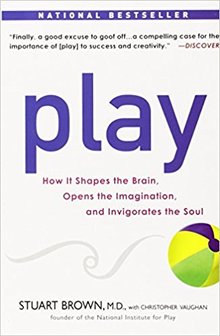
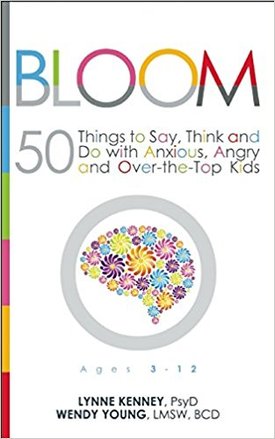
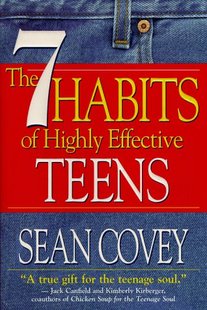

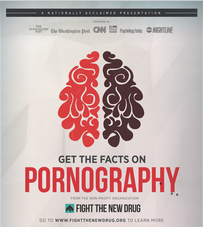

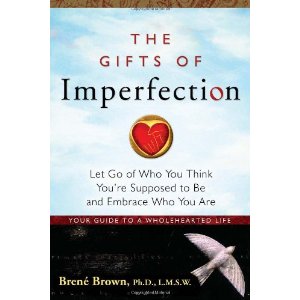
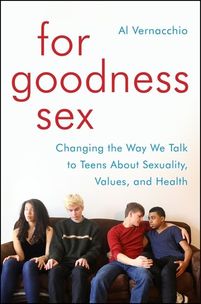
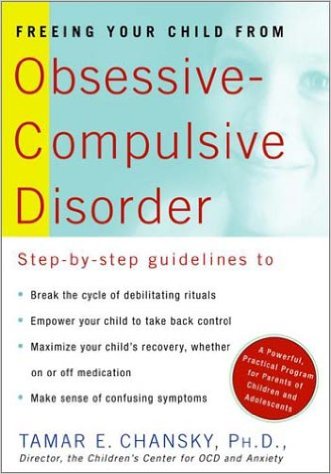
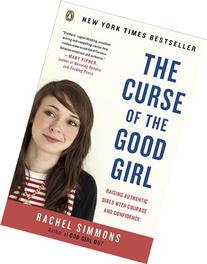
 RSS Feed
RSS Feed